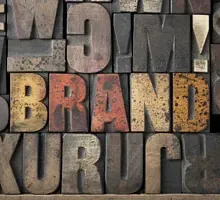Your personal branding toolkit
Written by

Branding used to be the sole domain of businesses, celebrities and politicians. Now, it’s up to all of us to maintain our own brand image - whether we’re building our own business, operating as a freelancer, or an employee.
Here are a few essentials you’ll need in your personal branding toolkit:
Name
Branding used to be the sole domain of businesses, celebrities and politicians. Now, it’s up to all of us to maintain our own brand image - whether we’re building our own business, operating as a freelancer, or an employee.
Here are a few essentials you’ll need in your personal branding toolkit:
Name
You might think you already have this one covered, but it’s worth giving your name a second thought.
Some questions for you:
- Do you want to be known as your own name (e.g. Emily Dickinson), a variation on your name (e.g. Emily M Dickinson), a pseudonym (e.g. David Bowie), or a brand name (e.g. Lady Gaga)? Which one sounds best when spoken out loud?
- Is your name available as a .com domain name? (The answer to this may affect your answer to the first question). If so, register it, even if you don’t plan on building a website any time soon. Having an email address that’s you@yourname.com is very cool and shows people that you back your own personal brand.
- Check your preferred name format’s availability on social networking sites - again, even if you’re not planning on using them. Find out availability at www.namechk.com. You need to own your name online. We look at which social networks you should use in the other exercise.
Photo
First impressions count. What does your headshot say about you?
- Get a professional shot that is well-lit, and captures your personality. If you’re not quite sure how to express your personality, that’s where a professional portrait photographer can really help.
- Consider how the following elements can also express (or miscommunicate) your identity: background location, clothing, lighting, camera angle.
- Remember to get your headshots in print resolution as well as web quality. You never know when you’ll need a print-quality version of your photo - for media interviews, brochures, etc.
Elevator pitch
There’s a whole Generator section on perfecting your elevator pitch, so if you haven’t already, go through that exercise. And practice, practice, practice. You will learn from every reaction to your elevator pitch, and be able to adjust it so it communicates more clearly each time.
Bio
You’ll often be required to provide a bio - whether it’s for your own website or brochure, a conference or exhibition or team that you’re part of, or a social network profile. Make sure your bio is working for you.
- Don’t just list your qualifications or achievements, tell a story. Learn from Hollywood that stories aren’t just beginning, middle and end; they’re about a hero overcoming obstacles and conflict to achieve success.
- Put personality into your bio. This is not a seriousness competition. Put your uniqueness into the way you tell your bio. If you’re whimsical, make it whimsical. If you’re earthy, make your bio down-to-earth.
- Develop three different bios: a short paragraph, a medium-length bio (3-4 paragraphs) and a longer one (1x A4 page). If you really like, you can go ahead and write your memoirs, but you may not have time for this.
Business Cards
In Michael Moore’s debut film Roger & Me, a security guard asks Michael Moore for his business card. All Moore has to show him is a frequent flier card. Moore never got to see Roger Smith. Maybe a business card would have made a difference.
Either way, it’s a good idea for you to have a card to give people who are interested in what you do. Here’s a checklist when developing your business card:
- Name. See above!
- Title. It’s not absolutely necessary to have a title (especially if you wear many hats), but it’s another opportunity to creatively catch people’s attention and earn a unique place in their heads.
- Phone number. A cell phone is pretty standard. If you feel the need for a landline, but don’t want to use your home phone, you can set up a Skype landline number in any city of your choice.
- Email address. Remember that domain name you registered? This is your chance to use that email address, not your gmail or xtra email address.
- Website. Even a one-pager is better than nothing. If you really don’t have time, knowledge or resources to create a website, you can create a profile at about.me. This can serve as your central “go to” place on the web.
Once you have your personal branding toolkit together, keep all the elements (photos, bios, etc) somewhere you'll be able to access regularly. You'll need them as you set up your social media ecosystem (see exercise 'Where to be online').